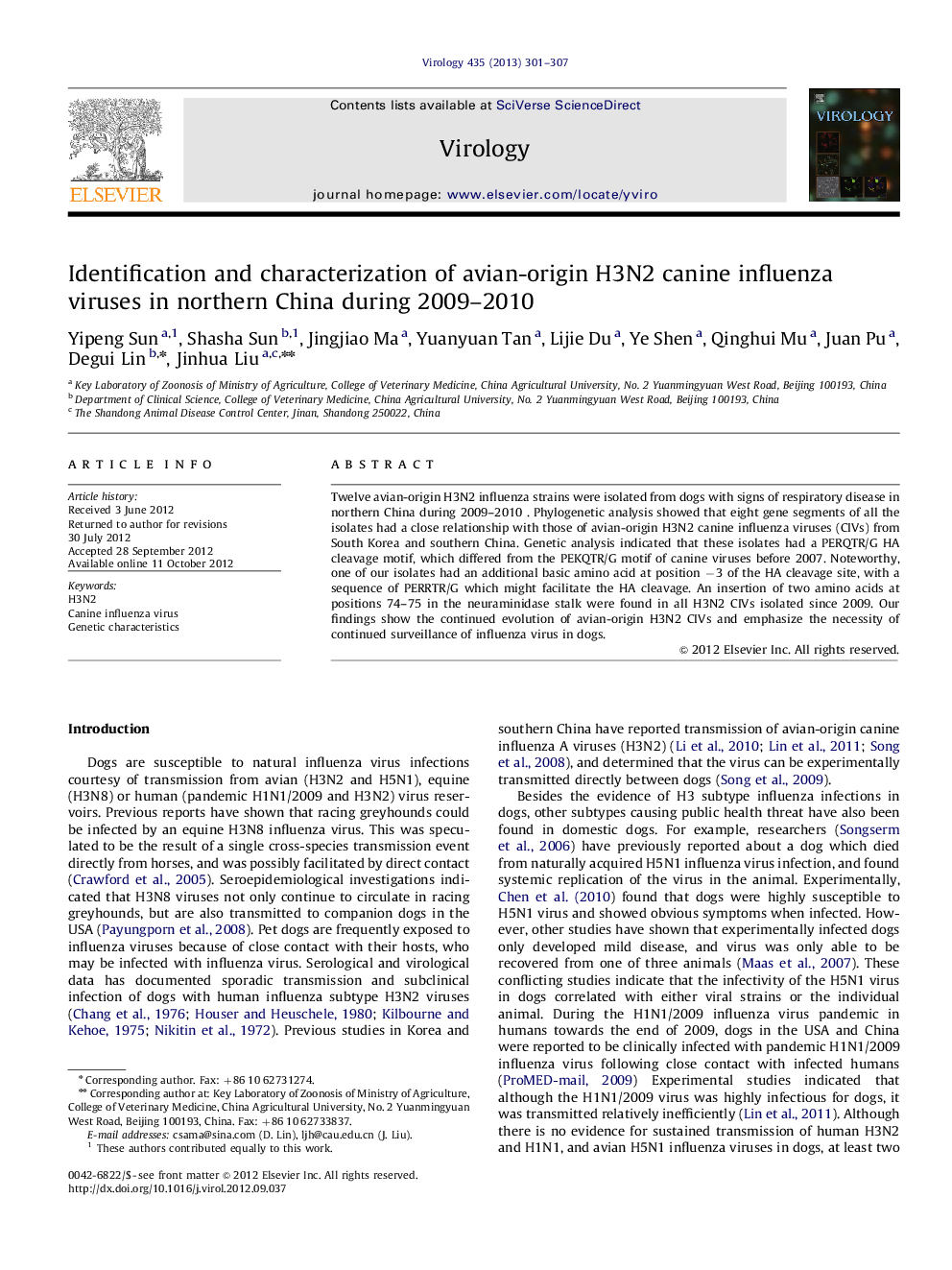| Article ID | Journal | Published Year | Pages | File Type |
|---|---|---|---|---|
| 3424177 | Virology | 2013 | 7 Pages |
Twelve avian-origin H3N2 influenza strains were isolated from dogs with signs of respiratory disease in northern China during 2009–2010. Phylogenetic analysis showed that eight gene segments of all the isolates had a close relationship with those of avian-origin H3N2 canine influenza viruses (CIVs) from South Korea and southern China. Genetic analysis indicated that these isolates had a PERQTR/G HA cleavage motif, which differed from the PEKQTR/G motif of canine viruses before 2007. Noteworthy, one of our isolates had an additional basic amino acid at position −3 of the HA cleavage site, with a sequence of PERRTR/G which might facilitate the HA cleavage. An insertion of two amino acids at positions 74–75 in the neuraminidase stalk were found in all H3N2 CIVs isolated since 2009. Our findings show the continued evolution of avian-origin H3N2 CIVs and emphasize the necessity of continued surveillance of influenza virus in dogs.
